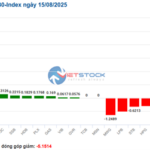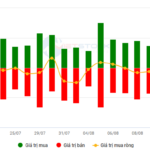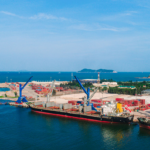A Series of Investment Projects Commenced, Approved for Investment Policy
In recent years, investment in transportation infrastructure in Vietnam has been promoted, creating trends and movements. The period of 2021 – 2022 is the phase of project initiation, preparation, and approval, with simultaneous implementation in 2023. This year, 2024 is designated as the year for accelerating the implementation of key transportation projects, with a total investment of a huge 422 trillion VND.
“Focus on progress, not setbacks. Wherever difficulties arise, they must be resolved. Obstacles at any level must be overcome,” Prime Minister Phạm Minh Chính emphasized at the meeting of the State Steering Committee for Key Transportation Projects this morning, 16 February.
The Prime Minister further stated that if we can disburse 422 trillion VND of investment capital for transportation infrastructure projects, it will contribute to promoting growth, creating jobs, livelihoods for the people, and opening up new development spaces for localities, regions, and the entire country.

In 2023 and January 2024, the preparation for investment in projects has been accelerated. Many projects have been initiated, such as the 2021-2025 Eastern section of the North-South Expressway, the 3 East-West Axis projects, Hanoi and HCMC ring roads, Tuyen Quang – Ha Giang Expressway, An Huu – Cao Lanh Expressway, Ho Chi Minh Road from Chon Thanh to Duc Hoa, etc.
At the same time, many investment projects have completed the approval of investment policies, investment projects such as Hoa Binh – Moc Chau Freeway, Huu Nghi – Chi Lang Freeway, Dau Giay – Lien Khuong Freeway are poised to commence contractor selection and ground-breaking in 2024.
Various expressway projects have been completed and put into operation such as 7 component projects of the Eastern section of the North-South Expressway with a length of 412 km, My Thuan – Can Tho Freeway spanning 23 km, Tuyen Quang – Phu Tho Freeway stretching 40 km.
With the newly deployed projects, provinces have concentrated their forces to organize land clearance work, fundamentally meeting construction progress requirements; investors and contractors have made efforts to organize construction to accelerate project implementation progress. Most projects have achieved or exceeded set plans; disbursement results of the projects have met high levels or exceeded requirements.
Infrastructure and transportation are prioritized for public investment
The focused efforts to boost public investment are expected to create ripple effects, serving as an important link in the development of many economic sectors. According to Guotai Junan Securities Company (Vietnam), the structure of public investment by sector during the 2010 – 2020 period in Vietnam shows that public investment in Vietnam is mainly used for developing infrastructure. In particular, public investment in the transportation sector, warehouses account for the largest proportion, increasing from 18% in 2010 to 28% in 2020. In second place is the power production and distribution sector, accounting for about 10% of total public investment in 2010 and decreasing to 11% in 2020.
This securities company stated that the energy – construction sectors will benefit directly with large proportions in the structure of public investment allocation. Alongside infrastructure projects, the construction material group will also indirectly benefit due to the high demand for steel, stone, and cement.
According to SSI Research’s assessment, the companies that will benefit from infrastructure investment projects will be leading companies, possessing strong financial resources in terms of asset scale, equity capital, and competitiveness advantages; experienced in participating in priority infrastructure construction projects with high technical content. Some leading companies that can be mentioned are Deo Ca Investment Infrastructure Development JSC – HHV, Lizen Joint Stock Company – LCG, Vinaconex – VCG, CIENCO4 Group – C4G…
On the other hand, Yuanta Vietnam Securities Company stated that the construction materials (VLXD) and infrastructure construction industries will benefit directly, while real estate (BDS) and logistics will benefit indirectly. Specifically, the VLXD sector, especially the construction stone and asphalt sector, will benefit more because this is a group with much better profit margins compared to the construction industry. “In the construction stone industry, logistics costs account for a large proportion, so companies with quarries near project areas will have the greatest advantages,” Yuanta Securities commented.
Nationwide, there are 34 large-scale projects, 86 national important component projects in the transportation sector in 46 provinces and cities. Among them are 5 railway projects, 2 airports, while the rest are road projects such as expressways and ring roads in the Hanoi Capital Region, HCM City ring road.



































